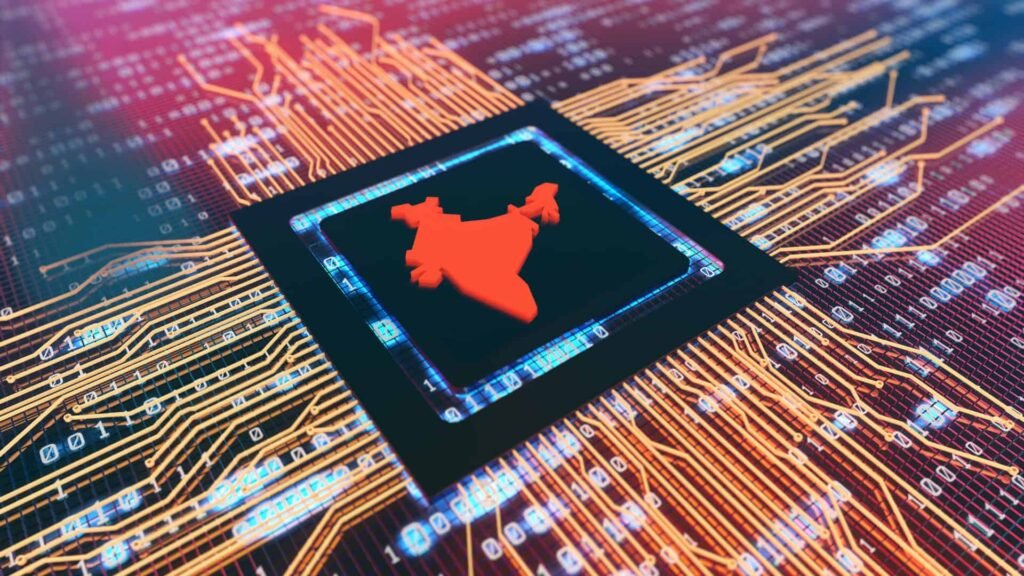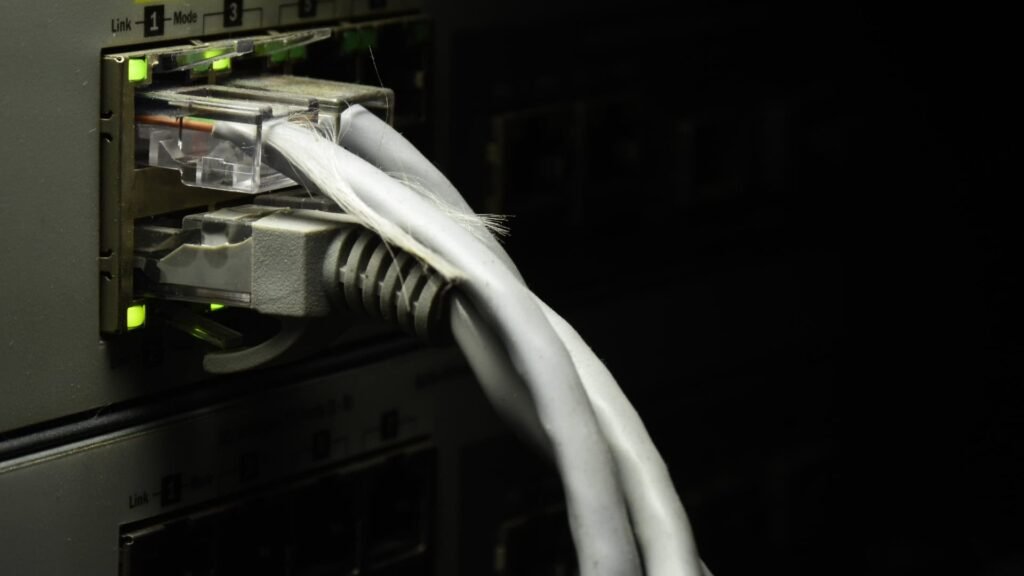India is stepping into a new chapter of rapid digital evolution. From smart cities to intelligent factories, the backbone of this revolution lies in reliable and intelligent networking.
As the country pushes forward with the Digital India initiative, the Role of PoE Networking in Industry 4.0 in Digital India becomes more critical.
Because, Power over Ethernet (PoE) is not just a technology; it is a bridge that connects power and data through a single cable. This innovation enables seamless connectivity for all smart devices.
This blog explores how PoE plays a pivotal role in making Industry 4.0 possible within the framework of Digital India, while also diving deep into technical aspects and use cases.

What is Industry 4.0?
Before we go ahead and talk about POE technology, we should have a basic idea about Industry 4.0 and digital india movement.
So here it is;
Basically, industrial 4.0 is the forth industrial revolution. This revolution is a major shift in major shift in industries.
In this revolution, we are going beyond just humans and machines. We are now using advanced technologies like AI and robotics. Even technologies like- cloud computing and edge computing are also the part of this era.
These innovation helps machine and systems to communicate and make decisions in real time. This leads to improved efficiency, greater automation, and minimal human intervention.
What is the Digital India Initiative?
Okay, so we have an idea about Industrial 4.0, now let’s understand what is Digital India initiative?
In simple words, The Digital India initiative is a flagship program launched by the Indian government to empower citizens and industries through technology.

This program aims to deliver government services digitally, increase internet penetration, promote digital literacy, and build smart infrastructure.
From rural broadband to urban smart cities, the initiative promotes connectivity and technology use at every level.
Networking infrastructure like PoE helps make this vision a reality by simplifying deployment, reducing costs, and enabling scalability.
What Is PoE Networking?
PoE stands for Power over Ethernet. It is a technology delivers both electrical power and data through a single Ethernet cable. In this technology, we generally use Cat 5e or latest version of ethernet cables.
When we use technology, it eliminates the need of separate power cable. This saves time, money and resources.
These days, PoE is being used in majority of smart devices including- IP cctv camera’s VOIP phones and industrial sensors etc.
Also, when you use the poe technology, you can deploy the devices where power outlets are not available. This makes it ideal choice for industrial and remote applications.

Understanding the Types of PoE Networking
Generally, PoE technology has been classified by two ways. The first way to categorize PoE is by the IEEE standards. how much power can be transmitted through the Ethernet cable. Meanwhile, in the second classification we have catogarized the devices on the basis of how the power gets to the device.
By IEEE Standards (Defines Power Capacity)
So, if we talk about First classification, where IEEE is classifying the poE technology, they have separated into 4 types.
- IEEE 802.1af (Type 1): This is the basic type of PoE networking, which delivers power supply of 15.4 watts. This technology is suitable for low power consumable devices like- Ip phones and cameras.
- IEEE 802.3at (Type 2 or PoE+): this technology is also known as PoE+ technology because it supplies upto 30 watts. PoE + technology is generally being used to power up devices like – Access point, PTZ cameras.
- IEEE 802.3bt (Type 3 & Type 4): Offers up to 60W (Type 3) or 90W (Type 4). It is ideal for high-powered devices like industrial sensors, or LED lighting systems.
These standards ensure compatibility across devices and safe delivery of power.
By Configuration (How Power Is Delivered)
The second classification is based on how the power gets to the device — known as the network’s configuration.
- Endspan Configuration: Power is supplied directly from the PoE switch, which is a device that combines both network data and electrical power in one unit.
- Midspan Configuration: Used when the switch itself doesn’t support PoE. In this case, a separate PoE injector is added between the switch and the device to inject power into the Ethernet line.
These configurations let you adapt to existing infrastructure without needing a complete overhaul.
What devices do you need to need to enable PoE Technology?
There are different hardware components that make up a PoE network, and each plays a specific role:
- PoE Switch: This is a network switch that supplies power and data over the Ethernet cable. It eliminates the need for separate power sources, ideal for powering multiple PoE devices like IP cameras and access points.
- PoE Injector: Used when a standard switch is in place and lacks PoE support. The injector adds power into the Ethernet line between the switch and the powered device (PD).
- PoE Splitter: This device splits the power and data from a single Ethernet cable into two separate outputs—one for data and one for power. It’s especially useful when connecting non-PoE devices to a PoE-enabled network.
- PoE Extender: When you need to exceed the standard 100-meter Ethernet limit, a PoE extender helps by repeating the signal and extending both power and data transmission to distant devices.
- PoE Media Converter: This component is used in hybrid networks. It converts fiber-optic signals into Ethernet and simultaneously provides PoE, making it perfect for integrating long-distance fiber connections with local PoE devices.
Impact of PoE on Digital India Goals
PoE technology is a crucial enabler in achieving the goals outlined by the Digital India initiative.
By integrating power and data over a single cable, it simplifies infrastructure and reduces deployment costs—an essential benefit for a diverse and rapidly growing digital ecosystem like India’s.
- Smart Infrastructure: PoE supports the seamless installation of IP surveillance systems, smart lighting, and access control devices. By removing the need for separate power lines, it makes infrastructure development quicker and more cost-effective.
- Affordable Rural Connectivity: In remote or underserved regions, where setting up conventional power and data lines can be expensive and logistically challenging, PoE offers a practical alternative. It helps bridge the digital divide by enabling efficient deployment of internet kiosks, learning centers, and sensor-based agriculture tools.
- Boost to Smart Manufacturing: Industry 4.0 relies heavily on connected sensors, robotics, and data analytics. PoE powers essential industrial IoT devices without complicating the factory layout, enhancing automation and efficiency.
- Smart Cities: From traffic monitoring systems to environmental sensors and smart poles, urban development projects rely on dense networks of connected devices. PoE simplifies and accelerates their deployment, making it easier for city planners to scale up operations.
- Scalability: As digital needs expand, PoE makes it easier to scale up networks without major changes to infrastructure. Whether adding new cameras, sensors, or access points, PoE ensures the system can grow efficiently and affordably.
Technical Benefits of PoE Switch
PoE switches are crucial in the digital infrastructure of smart industries and commercial setups. They enable the transmission of both data and electrical power through a single Ethernet cable, such as Cat5e or Cat6, making installations simpler, cleaner, and more efficient.
- One of the biggest advantages of using a PoE switch is centralized power delivery. This means you can manage, control, and monitor power distribution from a single network location, streamlining maintenance and operations. With cleaner installations, fewer cables are required, leading to reduced clutter, lower installation costs, and improved safety.
- The plug-and-play nature of PoE switches ensures that they automatically detect connected powered devices (PDs) and deliver the required amount of electricity without manual configuration. This feature significantly reduces the time and complexity involved in setting up large-scale networks.
- PoE switches also support high-bandwidth applications, especially when used with Cat6 cables, making them ideal for video surveillance, VoIP, and data-intensive IoT applications. They comply with strict IEEE standards (such as IEEE 802.3af, 802.3at, and 802.3bt), ensuring both safety and compatibility across different devices. These standards also help prevent short circuits, overloads, and power issues.
- Lastly, PoE switches contribute to environmental sustainability. By delivering power only when needed and eliminating the need for multiple power sources, they lower energy consumption and reduce the carbon footprint of digital networks.
Together, these benefits make PoE switches an essential tool in driving smart manufacturing and digital infrastructure under initiatives like Digital India.
Limitation Of PoE Technology –
Though, PoE Technology have several advantage but it comes with several disadvantages as well. Here are the few limitations or disadvantages that you have to face during the
- While Power over Ethernet (PoE) offers many benefits, it also comes with a few limitations that must be considered. Firstly, power delivery is limited. Even with PoE Type 4 (IEEE 802.3bt), the maximum output is 90W, which may not suffice for high-power devices like industrial machines or high-lumen lighting.
- Secondly, PoE is subject to a distance limitation. Ethernet cables such as Cat5e or Cat6 can only carry power and data up to 100 meters. To cover longer distances, PoE extenders or additional switches are required, adding to the cost and complexity.
- Heat generation is another concern. High-power delivery over compact cables can result in temperature rise, especially in enclosed or poorly ventilated spaces. This may require extra cooling solutions to maintain safety and efficiency.
- The initial cost of deploying managed PoE switches is also higher compared to traditional switches. However, these costs are often offset over time by reduced maintenance and cabling.
- Lastly, not every device is PoE-compatible. Connecting non-compliant devices may require a PoE splitter, which separates data and power to feed into legacy equipment.
Being aware of these limitations ensures better planning and implementation of PoE networks in industrial and commercial setups.
Conclusion: The Future is PoE-Driven
As India embraces Industry 4.0 and pushes forward with its digital transformation, PoE networking emerges as a critical technology. It supports scalable, cost-effective, and high-performance networks that are essential for smart factories, cities, and infrastructure.
The Role of PoE Networking in Industry 4.0 in Digital India will continue to expand, enabling the country to meet its ambitious goals while bridging the digital divide. Whether through PoE switches, injectors, or extenders — PoE is helping power India’s digital dreams, one Ethernet cable at a time.
